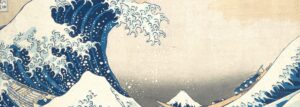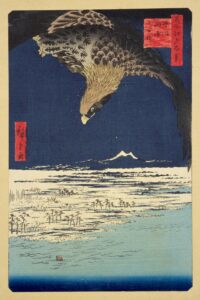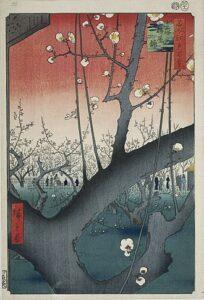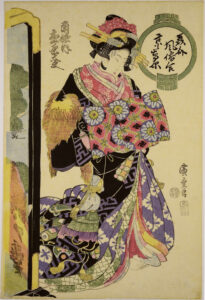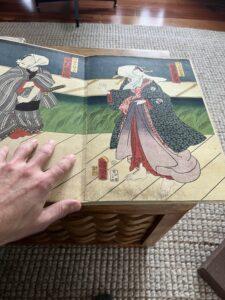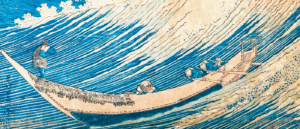An image representing how the Shin-hange movement continues, even today at a new exhibition upcoming in Brussels
Shin – ‘new’ and hanga – ‘prints’. Literally meaning the ‘new prints’ the Japanese Shin-hanga art movement came around in early 20th century Japan when classical ukiyo-e prints of the 17th to 19th century, pioneered by the famous Hiroshige, were facing what could be called, a crisis of sorts [1]. Shocked? Rightfully so. Let’s talk a little about the history of late-Edo period Japan. Modernization had come forth and industries like photography and what was known as offset printmaking – inked prints produced in bulk. To say the least, people had begun diverting from the labor intensive print making of Ukiyo-e, unlike during the times of Hokusai or Hiroshige. You might be wondering, what happened to the carvers, printers, and Japanese woodblock artists at the time then? Well, they were still there. And even though they did have a decent technical level when it came to woodblock art, the only way they could make ends meet was by replicating the works of famous Edo-period woodblock artists and selling them off to tourists[1]. Thankfully, right when they thought they had hit rock bottom, came a publisher Watanabe Shozaburo brought forth the idea of a renaissance by taking the same style as the ukiyo-e and revamping it with what they could take from Western Impressionists – shadows and lighting, and an export strategy on how to get Japanese prints to Europe and America a second time[2]!
And guess what, while it took a lot of hard work and effort, Shozaburo was able to awaken a wave of Japanese art all over Europe and the US through exports. A few artists that worked for him at the time were namely, Hasui Kawase, Koson Ohara, Shunsen Natori, and Shinsui Ito. In addition, other independent artists such as Hiroshi Yoshida and Goyo Hashiguchi also did everything they could to contribute to these new prints that the west was now in love with[3].
Shin-hanga followed almost all of the same categories as ukiyo-e . Speaking of them specifically first comes Husui Kawase. Having joined Shin-hanga in 1919, his styles retained most of the ukiyo-e elements in comparison to the others. Based on landscapes, some of his most famous creations were night views and snow portraits, so much so that he was declared a living legend by the Japanese government, a year before his death[3].
Another name that deserves to be mentioned when talking of the Shin-hanga movement would be Hiroshi Yoshida. Studying art in Kyoto, he was well-trained in Western art styles in his youth. A Japanese woodblock artist and avid traveler, he had his own exhibition in Detroit in 1899, and Yoshida returned to Japan to work, bringing along the international recognition that followed him. He even made his own studio to teach other young rising artists how to bring out the best of both worlds, the East and West, through woodblock art. And an interesting fact about him: unlike most woodblock artists, he often reused already carved blocks of paint with ink to bring out new pieces from faded paint, hence the shadow effect in his works [3]. His son, Toshi Yoshida, was also an accomplished artist and their styles merged – you can certainly tell they are father-son if you study both their bodies of work side-by-side.
Hiroshi Yoshida certainly takes the cake in terms of more depth, detail, and thus higher values in his woodblock prints. You can recognize an original Hiroshi Yoshida woodblock by looking for the Jizuri seal on his prints. A Jizuri seal means that Hiroshi Yoshida himself actually did the technical printing process – laying down the ink on the woodblock and making the prints himself – which it is actually quite rare for artists to self-publish. Furthermore, Hiroshi Yoshida was well known for his travel prints – he traveled the world making art and thus his woodblock prints show a variety of iconic places – New York City, the Grand Canyon, Paris, temples in the Middle East, and of course places all across Japan. Some of these travel woodblocks created by Hiroshi Yoshida are some of the most valuable from his vast body of work. In fact, you can find his entire body of work right here on our website in the Hiroshi Yoshida Archives. We have compiled in one single place a comprehensive database, with high resolution imagery, of all Hiroshi Yoshida’s work – over 500 beautiful woodblock prints for your pleasure of browsing!
And of course, how could you go without mentioning Ohara Koson when talking of the Shin-hanga movement? Known for kacho-e, a genre of the Shin-hanga prints specializing in the imagery of nature on plants and animals, these prints made it all the way to UK, US, New Zealand, all the way to Canada [4]. Koson made famous by producing woodblock prints of animals, birds, and other natural creatures and flora. His prints are generally around 6 inches in width and 12 inches in height – a thinner , more rectangular size of print.
While these might be just a few household names, the truth still remains that if it wasn’t for the Shin-hanga movement, the masterful works of the 17th-19th centuries would have been buried with the artists as the twentieth century commenced. Collectors of Shin-hanga, including the late CEO of Apple Steve Jobs had formerly established several galleries solely dedicated to these ‘new print’ pieces. Collectors and galleries today are playing their part in promoting these art pieces and nurturing this movement, and often times the pieces command high value. You can find original Shin Hanga Woodblocks for sale right here on jpwoodblocks. Click here to browse our current selection.
Links
[2] “Shin-Hanga (English) – Estampes Shin-Hanga.” Google Sites: Sign-In, https://sites.google.com/site/estampesshinhanga/shin-hanga-english.
[3] “Shin-Hanga – the Japanese ‘New Prints’ ” The Art Wanderer.” The Art Wanderer, 13 May 2021, https://theartwanderer.co.uk/shin-hanga-the-japanese-new-prints/.
[4] Team, Kuriosis. “Ukiyo-e vs Shin-Hanga: Differences and Similarities between Two Japane.” KURIOSIS, KURIOSIS, 19 Aug. 2020, https://www.kuriosis.com/blogs/news/ukiyo-e-vs-shin-hanga-differences-and-similarities-between-two-japanese-movements.

